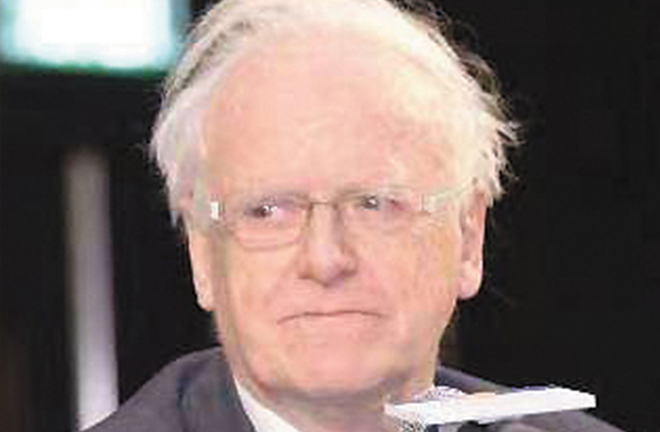Dualism (yin and yang) as a pathway to respect for diversity in the modern world

John Anthony Carty is a professor of International Law at Beijing Institute of Technology.
The subject of Alternative Modernities, China, and the West, is the most important intellectual challenge at present for scholars worldwide. This is the foundation point from which one has to understand the huge divide between China and the West around the so-called “rules-based international order” which the West comes up with.
An issue of political philosophy
In fact, it is not a way of thinking which draws upon compliance with public international law, based on the consent of states, but a political philosophy which is constructed out of Western ideas of individualism and market economy, and one-man-one-vote popular democracy. They are supposed to be universal values and all nations and peoples are expected to conform to them. The alternative Chinese perspectives for the modern world concern the fundamental ideas of the nature of authority and of relationship among people, present in both national societies and in international society.
Traditionally, Chinese Confucian thinking has stressed the importance of hierarchy in society, respect of children for their parents, respect of the people for their rulers, of younger for older people. However, the rulers themselves also stand “under heaven,” and while there may be no institutional, formal definition of what this means, it can be taken to be that if the rulers fail the people, they will lose their power. There is a permanent injunction on all levels of society to reflect upon themselves to ensure that they fulfill their roles to the best of their ability.
For my Western reflections, I attach special weight to the thesis that Western individualism, far from being an effective celebration of human autonomy, is caught up unconsciously in negative relations of rivalry driven by resentment and anger.
My on-going research in this area is more directly related to my perception of the breakdown of an international legal order based upon a Western sense of relationships based upon radical individualism. This can and does only lead to whimsical unilateralism rather than a painstaking, patient endeavor to work through conflictual relations to attain a balance with a continuing reasonable or tolerable level of tension in international legal relations.
My first statement of the problem was in The Decay of International Law, published in 1986 and republished last year. The problem is rooted in the radically subjective individualism of the European Enlightenment adopted into international law by Emer de Vattel. This is where I finally come to the idea of complementary dualism, bringing with it the pathway to respect for diversity among nations—as among individual persons. This was a recognition that societies are not all the same, that they cannot be completely assimilated to one another, and that there will always be a nervous tension between accommodation and continuing diversity. However, for the philosophy of yin and yang (passive and active/ light and dark), the interaction of differences is the dynamic force of change. The crucial fact to remember, from Chinese culture, is that all individuals are anyway literally “joined at the hip” and cannot act unilaterally if by that they think they can simply walk away and self-isolate.
Yin and yang as a pathway
It is hardly necessary—in the presence of a Chinese audience—to set out in detail the philosophy of yin and yang, but there are two points I wish to stress, the first recognized profoundly by Girard and Mishra, that the separability of individuals is illusion—people live together constantly in one another’s imaginations—and secondly, that their differences and diversity are not of an ethical character—a matter of black and white morally—but merely express the ontological character of reality—the nature of being. Nonetheless this “nature of being,” the inseparability of persons and the irrepressibility of diversity, may be most clearly expressed in Chinese culture, not as a strength of that culture, but as a source of potentially universal enlightenment, not particular Chinese cultural instinct. Yin and yang are not objects, but qualities or attributes. The Chinese classify all attributes into pairs of dipoles—heaven and earth, sun and moon, activity and tranquility, old and young, big and small. Dualism consists of opposites making up a unity. The aim is to achieve balance and harmony, where there can be no question of the one side being able to overcome the other, which could only be an instance of extreme imbalance that would eventually reset itself, in an unstable and maybe even violent way. The two poles cannot mutually exclude one another according to the principles of truth and falsehood, good or evil. It is always a question of attaining a balance in the context of constant change (these are ideas I have developed together with young Chinese scholars in an article called “Black and White; Yin and Yang” published a couple of years ago).
For yin and yang, the idea of hegemony is illogical and self-contradictory—a dominating relationship is dysfunctional and will inevitably reset itself forcefully. Even competition is problematic, since following Girard and Mishra, it will be likely driven by envy and resentment. However, the ideal of partnership will always be delicately balanced, because of the spontaneous interaction of light and darkness, activity and tranquility. We are all different and so are our societies. What argues even more strongly against the possibility of hegemony is that interconnections of society—as of individuals—are so complex and constantly changing that it is impossible for any single society to have the ambition to rule over all the others. Relations are not only face-to-face; they are also back-to-back. And no one can look in all directions at the same time.
Edited by BAI LE
